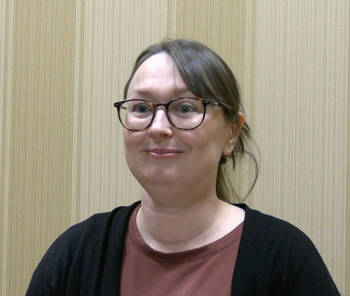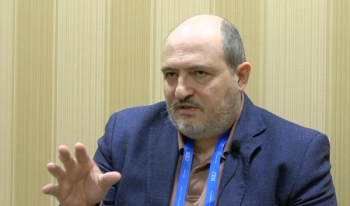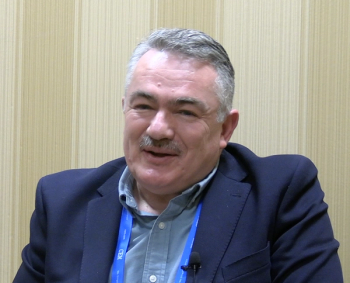
Spectroscopy Announces the Winner of the 2021 Emerging Leader in Atomic Spectroscopy Award
L. Robert Baker, an associate professor at The Ohio State University, has won the 2021 Emerging Leader in Atomic Spectroscopy Award, which is presented by Spectroscopy magazine. This annual award, begun in 2017, recognizes the achievements and aspirations of a talented young atomic spectroscopist, selected by an independent scientific committee.
The award will be presented to Baker on February 24 at the Spectroscopy Virtual Symposium, “Atomic Spectroscopy in Practice,” where he will give a plenary lecture.
Baker’s work focuses on understanding electron dynamics in photocatalytic systems using time-resolved X-ray spectroscopy. Understanding these dynamics and how they influence device efficiency is key to making new, high-performance materials. In this work, Baker has designed and constructed a tabletop ultrafast extreme ultraviolet (XUV) and soft X-ray light source. Because X-ray absorption is element-specific, this technique can track electron dynamics with site-selective resolution by measuring transient oxidation and spin state changes in real-time.
Because energy conversion occurs uniquely at material surfaces it is important to understand how electron dynamics differ at a surface or interface compared to the bulk of a material. To observe ultrafast electron dynamics specifically at surfaces, Baker extended this method by showing that XUV transient absorption performed in a reflection geometry is extremely surface sensitive, having a probe depth of only a few nanometers.
Baker has applied this tool to understand the photoexcited surface states of transition metal oxides. These materials are widely used as photocatalysts, although the nature of these surface states and their effect on catalytic efficiency has remained poorly understood. His work has shown that following photoexcitation of various late transition metal oxides, electrons localize to the metal 3d conduction band states and holes localize to O 2p valence band states in less than 100 fs. This charge localization was observed by ultrafast XUV measurements taken for the first time at the metal M2,3-edge and at the O L1-edge simultaneously.
Baker also has recently studied electron and hole dynamics in the photoelectrochemical catalyst CuFeO2, which shows high selectivity for CO2 reduction. In this work, Baker investigated the photophysics of this material, which give rise to its high efficiency. CuFeO2 possesses a layered structure, with alternating sheets of Fe3+ and Cu1+ metal centers. Element-specific XUV measurements show that ultrafast hole thermalization from O 2p to Cu 3d valence band states leads to separation of the electron and hole across layers in less than 1 ps. This ultrafast charge separation facilitates photochemical activity in CuFeO2, which is notably absent in similar semiconducting metal oxides lacking this layered motif.
In another area of research, Baker showed that ultrafast electron trapping in hematite (α-Fe2O3) is the result of small polaron formation, which localizes electrons at the surface, and that this process occurs generally independent of surface morphology or defect states. Hematite is an earth-abundant material that is widely used for water oxidation, but its efficiency must be improved to enable widespread application. Baker’s work advances understanding the nature of these surface states and how they influence electron dynamics in this material will help facilitate this important effort.
Baker has published 35 papers in peer-reviewed journals and has been an author on more than 70 oral presentations at scientific conferences, including 56 invited talks.
Baker has received several other awards, including the Benjamin Boussert Memorial Award from the University of California, Berkeley, the Department of Energy Early Career Award, the Air Force Office of Scientific Research Young Investigator Award, the Camille Dreyfus Teacher-Scholar Award, and the Journal of Physical Chemstry/PHYS Division Lectureship from the American Chemical Society.
For information about how to nominate a young scientist for the 2022 award, please see the
Newsletter
Get essential updates on the latest spectroscopy technologies, regulatory standards, and best practices—subscribe today to Spectroscopy.




